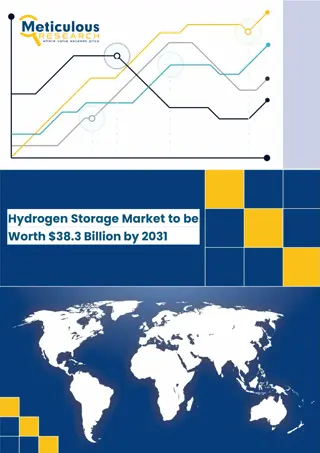Understanding Syrups: Types, Formulations, and Storage Considerations
Syrups are sweet, viscous liquids used in pharmaceutical preparations. They can be non-medicated for flavoring or medicated for therapeutic purposes. There are sugar-based and sugar-free syrups, with sucrose preferred for its purity and handling ease. Preservatives like benzoate and sorbic acid are used to maintain syrup quality, and hydrolysis of sucrose can lead to inversion sugars with specific properties. Proper storage in sealed containers at room temperature helps prevent mold growth and crystallization.
Download Presentation

Please find below an Image/Link to download the presentation.
The content on the website is provided AS IS for your information and personal use only. It may not be sold, licensed, or shared on other websites without obtaining consent from the author. Download presentation by click this link. If you encounter any issues during the download, it is possible that the publisher has removed the file from their server.
E N D
Presentation Transcript
syrup Syrups: Are sweet, viscous aqueous liquids, they are concentrated aqueous preparations of sugar or sugar substitute with or without flavouring agents and medicinal substances. Medically they are divided into two types:- 1. Non medicated syrups:-(flavouring syrups): These syrups are intended to serve as pleasant tasting vehicles for medicinal substances (example cherry syrup, orange syrup, simple syrup.) 2. Medicated syrups:-These contain ingredients giving them therapeutic value. (E.g. Antitussive , antihistamines).
Pharmaceutical classification of syrups according to their basic formulation 1. Sugar based syrups: These are concentrated solutions of sugar (e.g. Sucrose ,dextrose). 2. Sugar free syrups: These are formulated with artificial sweetening agents.(e.g. sorbitol) The use of sucrose is preferred in the pharmaceutical preparation due to : A. It s purity B. Degree of sweetness C. Lack of color D. Ease of handling E. It s inertness.
Note : Sucrose subject to two degradative pathways: Fermentation Hydrolysis Fermentation of sucrose : Sucrose as carbohydrate in dilute solution provide nutrient media for the growth of micro- organisms.(Mold, yeasts) The steps of M.O. growth include: turbidity (change in colour) ,(change in odour) ,(change in taste). The concentration of sucrose is an important factor in inhibition of mold growth , the saturated solution of sucrose if stored properly will be self preserving (contain no free water ,thus they behave as anhydrous media with respect to growth of M.O and this will lead to shrinkage and lyses of M.O.
Preservatives which are suitable for use in syrups: benzoate, parapens, sorbic acid, mixture of methyl parapen and butyl parapen. In some syrups alcohol present in small amount (not more than 10%) which serve as solubilizing agent for alcohol soluble ingredient ,also alcohol concentrated by evaporation above the syrup and prevent the growth of surface molds.
Hydrolysis of sucrose Sucrose is disaccharide and can be hydrolysed to give monosaccharides (dextrose (glucose) , fructose(levulose) Invert sugars H+ The hydrolytic reaction is acid specific (i.e. hydrogen ion act as a catalyst)this reaction called inversion. The invert sugars (dextrose, fructose) have specific properties: They are fermented more easily than sucrose They are sweeter than sucrose Degradation of laevulose (which is formed by inversion )is responsible for brown color of some colourless syrups. This change called caramelization ,this phenomena is take place in syrup containing acids. Storage of syrup Generally syrups are stored at room temperature , in tightly stoppered well filled bottles ,saturation and refrigeration will inhibit both mould growth and inversion , but less than 4 C will cause crystallization (large crystals difficult to redisolved.)
Simple syrup B.P Rx Sucrose 667 g D.W Q.S 1000 g Method : 1. Weigh the beaker empty and weigh the sucrose in it 2. Add small quantity of water with stirring to dissolve the sucrose on gentle heating (using water bath). 3. Weigh again to complete the weigh by hot water Simple syrup U.S.P. Rx Sucrose 850 g D.W Q.S 1000 ml Methods : Prepare by using boiling water
Ipecac syrup Rx Ipecac fluid extracts 70 ml Glycerin 100 ml Simple syrup Q.S 1000 ml Sig f ss t.i.d p.c Method: Mix the fluid extract with glycerin then add enough syrup to make the product measure 1000 ml and mix thoroughly. Note : Ipecac used as expectorant in small dose (25 -100 mg) at larger dose it is used as emetic agent (vomiting occur within 30 min due irritation of GIT. Emetic dose in adult 10-30 ml ,in children 10 -15 ml. Tolu balsam syrup U.S.P Rx Tr.of tolu balsam 50 ml Mg carbonate 10 g Sucrose 820 g D.W Q.S 1000 ml Sig f ss p.r.n Method: 1.Mix tolu balsam tr.with 10 gm Mg carbonate and sucrose 60 g in a mortor. 2.Gradualy add 430 ml D.W with trituration and filter 3. Disslove the remainder of sucrose (760 g) in the clear filterate with gentle heating (not over 50 c) 4.Strain the syrup .while warm and add D.W through strainer to make product .mix thoroughly .
Notes Tolu balsam syrup used as expectorant , flavouring agent . Tolu balsam is soluble in alcohol , ether, chloroform but it is insoluble in water because it contain resins. Mg carbonate is very soluble in water and partially soluble in alcohol. Mg carbonate used as distributing agent for tolu balsam tr. Because it is alkaline and this help in dissolving the resinous content of the tolu balsam .
Mist. Diuretic (acidic) Rx Potassium citrate 300 g Citric acid 50 g Lemon spirit 5 ml qullaia tr. 10 ml Syrup 250 ml Chloroform water double strength 300 ml Water Q.S 1000 ml Method 1. Dissolve the solids in a mixture of the CHCl3 water and syrup by shaking or vigorous stirring 2. Add qullaia tr. 3. Add lemon spirit in small amounts ,shake after each addition 4. Complete the volume and mix. Note : Double strength chloroform water is twice the concentration of ordinary aromatic water Acidic mist . diuretic used for hypertensive patient. Mist diuretic (alkaline) Rx Pot.citrate 20 g Na bicarb. 20 g Conce. infusion of bucha 20 ml Syrup of orange 40 ml Chloroform water Q.S 300 ml
Method 1. Weigh the solids and dissolve them in the mixture of chloroform and syrup by shaking Add conc. Infusion of bucha Complete the volume and mix. Dextrose based syrup dextrose is used instead of sucrose in syrups containing strong acids to prevent caramelization. Differences between sucrose and dextrose 1. The saturated solution of dextrose is 70%, so the dextrose based syrup susceptible to the growth of micro-organism, therefore we must add preservative . 2. Dextrose dissolve more slowly than sucrose. 3. The sweetness of dextrose is less than the sweetness of sucrose . Note :- We may use glycerin as preservative in dextrose based syrup why? 2. 3.
Hypophosphite syrup Rx Calcium hypophosphite 35 g Potassium hypophosphite 18 g Sodium hypophosphite 18 g Hypophosphourous acid 1 ml Dextrose 250 g Glycerin 300 ml D.W Q.S 1000 ml Methods 1. Dissolve Ca ,Na and K hypophosphite in water 2. Mix hypophosphorous acid, dextrose and glycerin in a bottle. 3. Filter the first mixture over the second mixture in a bottle. 4. Shake form time to time until the sol. Is completely dissolved. 5. Transfer the mixture into a graduated cylinder and complete the volume. Note : This prescription used as tonic and in deficiency of electrolyte .
Sugar free syrup (non - nutritive syrup) Sugar free syrup: it is called artificial syrup ,this type of syrup given to patients suffering from diabetes mellitus. General formula of non-nutritive syrups. Sweetening agent : sorbitol , saccharine , aspartame. Viscosity builder: carboxy methyl cellulose (CMC), Sodium alginate. Preservative : benzoic acid, sodium benzoate. Purified water.
Sorbitol based syrup Sorbitol has the following properties: Used in non nutritive syrups for diabetic patient (not cause hyperglycemia). Not cause dental carries. Sorbitol is 60 % as sweet as sucrose. Have a good taste. Not need preservative if it is concentration is more than 60%. Chemically stable. Not absorbed from GIT as rapid as sucrose. Not irritating to the mouth and throat membrane. Has a laxative effect if ingested in large quantity. Has half the viscosity of simple syrup.
Sorbitol solution U.S.P Rx Sorbitol 70 g D.W 100 g Method by simple solution method Chloral hydrate syrup ( U.S.P) official Rx Chloral hydrate 0.5 g Simple syrup Q.S 100 ml Ft. mist Sig. F ss o.n Method : Dissolve chloral hydrate in 75 ml of simple syrup, stir well, filter then complete the volume of filtrate to 100 ml by simple syrup. Chloral hydrate syrup (non-official ) Chloral hydrate 0.5 g Sorbitol 70 g D.W Q.S 100 ml Method : 1. Dissolve chloral hydrate syrup and sorbitol in 75 ml of water . 2. Stir well to enhance solubility. 3. Strain by cotton. 4. Complete the volume to 100 ml by D.W.























